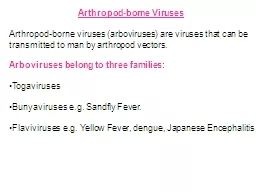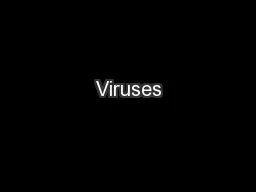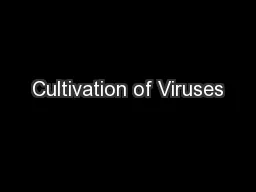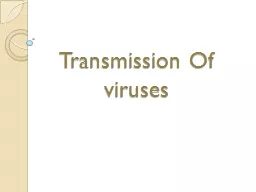PPT-Arthropod-borne Viruses
Author : giovanna-bartolotta | Published Date : 2016-05-27
Arthropodborne viruses arboviruses are viruses that can be transmitted to man by arthropod vectors Arboviruses belong to three families Togaviruses Bunyaviruses
Presentation Embed Code
Download Presentation
Download Presentation The PPT/PDF document "Arthropod-borne Viruses" is the property of its rightful owner. Permission is granted to download and print the materials on this website for personal, non-commercial use only, and to display it on your personal computer provided you do not modify the materials and that you retain all copyright notices contained in the materials. By downloading content from our website, you accept the terms of this agreement.
Arthropod-borne Viruses: Transcript
Arthropodborne viruses arboviruses are viruses that can be transmitted to man by arthropod vectors Arboviruses belong to three families Togaviruses Bunyaviruses eg Sandfly Fever. What Are Blood borne Pathogens? Blood borne pathogens are microorganisms such as viruses or bacteria that are carried in blood and can cause disease in people. Types of Blood borne Pathogens Blood bo A . virus. is a small . infectious agent. that can replicate only inside the living cells of organisms. Most viruses are too small to be seen directly with a . microscope. . Viruses infect all types of organisms, from . DNA Enveloped . Viruses. I. Objectives. In this lecture you will learn about properties, pathogenesis, clinical picture and diagnosis of: . Herpesviruses. . (HHVs 1 to 8). Poxviruses. Smallpox Virus. corticosterone. Two microbe strains were more commonly found in nests gathered at the rural site.. . Background. Discussion. Results. Methods. Acknowledgements. Correlations between nest commensal species, nestling health and hormones in the Eastern bluebird, . A. Viruses are a unique group of biological entities. 1. They are not capable of surviving without a host cell (lack metabolic machinery). 2. They do, however, contain all the information necessary to direct metabolic processes. CLS 212: Medical Microbiology. History. Through the 1800s, many scientists discovered that something smaller than bacteria could cause disease and they called it . virion. (. Latin word- poison. ).. Where the name came from. This is a phrase coined from biology to describe a piece of software that behaves very much like a real virus (only it spreads from computer to computer rather than people!).. Embryonated. Egg. Viruses. Viruses do not fall in the category of unicellular . microorganism. They . are obligate intracellular parasites and lack the . machinery . necessary for protein and nucleic acid . EQ: Why are viruses considered to be non- living?. Characteristics:. *Nonliving particles made of . nucleic acid. and a . protein coat . enlosed in a . capsid. shell... *In order to reproduce, all viruses must have a . VOCABULARY. Virus. Capsid. Envelope. Human . Immunodeficiency Virus (HIV. ). Influenza. Lytic Cycle. Lysogenic Cycle. Lysis. Retrovirus. Prerequisite questions. What are the eight characteristics which all living things have in common. . . The process of transfer of virus into host is referred as . TRANSMISSION. and this is an important step in the life cycle of viruses.. Person to person infections are said to be . HORIZONTAL. . 1. Reservoir of Pathogen. Contamination of food. Viral or Parasitic. infection. Growth of pathogenic bacteria. Infection. Intoxication. Toxicoinfection. Food+ Live cells. Food +Toxin. Invasive Infection. Friday. Discuss . upcoming Food-Borne Illness Project . Monday. FBI Project. Bread cell phone and hand activity. Three slices of bread will come your way!. Dirty hand. Pass around the slice of bread and touch the white. Food borne diseases (FBD) are acute illnesses associated with the recent consumption of food. The food involved is usually contaminated with a disease pathogen or toxicant. . Such food contains enough pathogens or toxicant necessary to make a person sick..
Download Rules Of Document
"Arthropod-borne Viruses"The content belongs to its owner. You may download and print it for personal use, without modification, and keep all copyright notices. By downloading, you agree to these terms.
Related Documents














